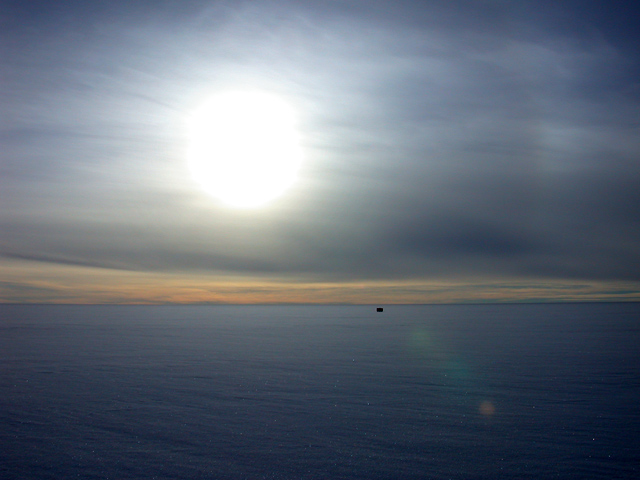
| |<< |< August 7, 2005 >| >>| | |
|
It has been a looong day, but well worth it. It is true that it is sunday, and sundays are usually a bit more laid back than the usual work day. But, this was our last real full day to try and get some major testing done on the robot. So, after giving ourselves and extra half hour or so this morning to get going (which certainly wasn't enough, after staying up into the wee hours watching the non-sunset, then playing cards afterwards), we continued on. After one or two small hardware glitches (a measurement circuit with a bad solder joint here, a burnt opto-coupler there, the usual) we succeeded in getting a fourth panel online. We would have proceeded onto getting the fifth and final panel online and providing power, except that it is not possible. The numerous failures earlier this week, which took some three days to resolve, had drained our stock of replacement parts to the point that we not only have four working DC/DC converters for conditioning the power output of a solar panel. So, four it is, and four it shall be (until we can get back stateside and can make an order to Digikey). But, with the tremendous amount of sunlight available to us all day, four would certainly be enough, unless perhaps the sun got low on the horizon and we the robot had it dead astern. More on that later. Wanting to give the robot a real test, now that we could be assured of continuous power for hours on end, we sent it out on a long course: a series of waypoints to the north of camp, a round trip of some 12 kilometers. We sent it on its way around 3:30 or so, under blue skies and towing a sled of equipment behind it for measuring the amount of sunlight around and the strength of the snow beneath. Jim followed after it for the first long stretch, taking data as he did so, but leaving the robot to its own devices. From the word go, we neither gave the robot instruction nor received feedback from it. By the time Jim and I were switching roles (my turn to babysit and trail the robot), around 7pm, the robot had become a speck a good distance off. At the same time, the sun had already crept low on the horizon. Sunset occured yesterday, so we knew that the sun definitely would not last tonight. Being at such a high latitude, the sun doesn't exactly drop below the horizon, but slants gently down until it just so happens to be below the horizon. So, when it began its final leg of the course at around 8, the sun was barely 20 degrees above the horizon, and dimming from clouds and the longer ray path through the horizon. The temperature, incidentally, was also dropping - down to the single digits (fahrenheit). Somehow or other, despite there being less than a quarter of the sunlight it has available when it began this trip, and with the sun shining on the one panel that we haven't been able to bring online and leving the others in shadow, the robot was able to continue on. Probably the robot was drawing ever more heavily from the batteries to make up the shortfall. But the batteries began the trip with less than a half charge from the last day and a half of bench testing without recharge. So, at around 9, with now about 15% of the sunlight we had earlier today, the batteries were no longer able to keep the robot going, and we had to stop the test. We were only about a half mile from our destination. But, Jim and I are hardly discouraged - we managed to get through about 90% of the course and, had we just started a little earlier in the day, we would have succeeded handily. We have, in short, accomplished what we came here to do: to prove the robot can drive for long stretches on its own power and with its own guidance, free from human help or direction. But, it has made for a long day, as I said. And this has turned out by far to be the longest daily report yet. So, I shall close here. Well, one last thing, perhaps. While yesterday's Sunset was a bit of a let-down, the sky conditions right now (at 11:20 pm) indicate that tonight might be the spectacle we've been waiting for. --Alex Streeter |
|
 |
|
| Behold the power of solar. The robot is the black rectangle just right of center. Unfortunately, my camera can't produce a shutter speed fast enough to adequately capture the scene, and my skills in photoshop leave much to be desired. | |
| |<< |< August 7, 2005 >| >>| |
| [Main] | [Mission] | [Design] | [Science] | [Papers] | [Pictures] | [Team] |
|
Last Updated on 10/20/2005 by Streeter
Site © Thayer School of Engineering, Dartmouth College, Hanover, N.H. |